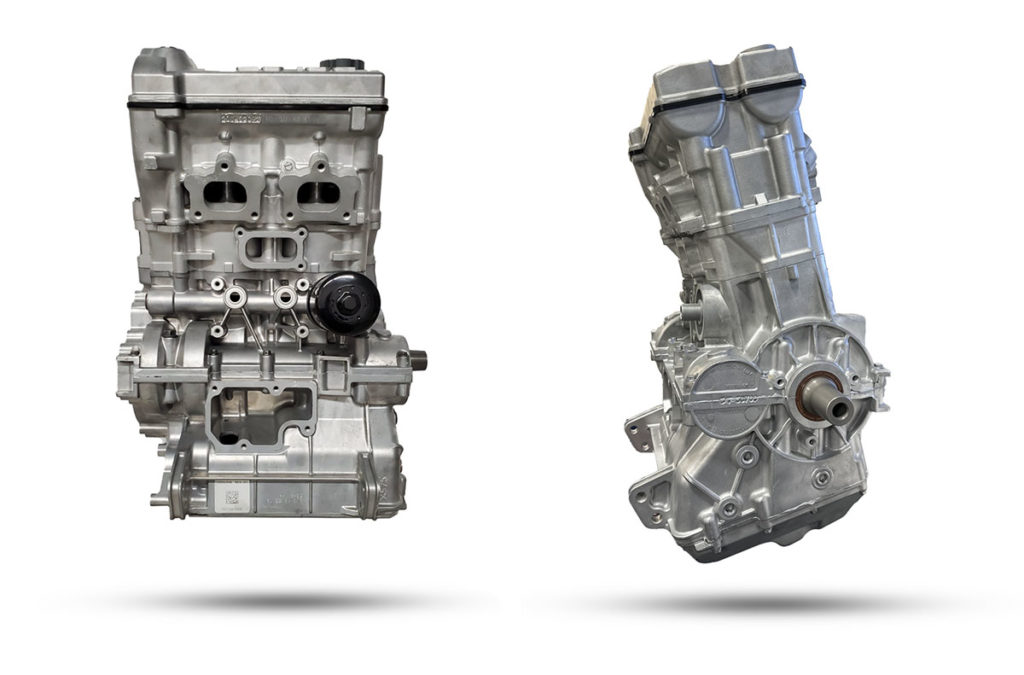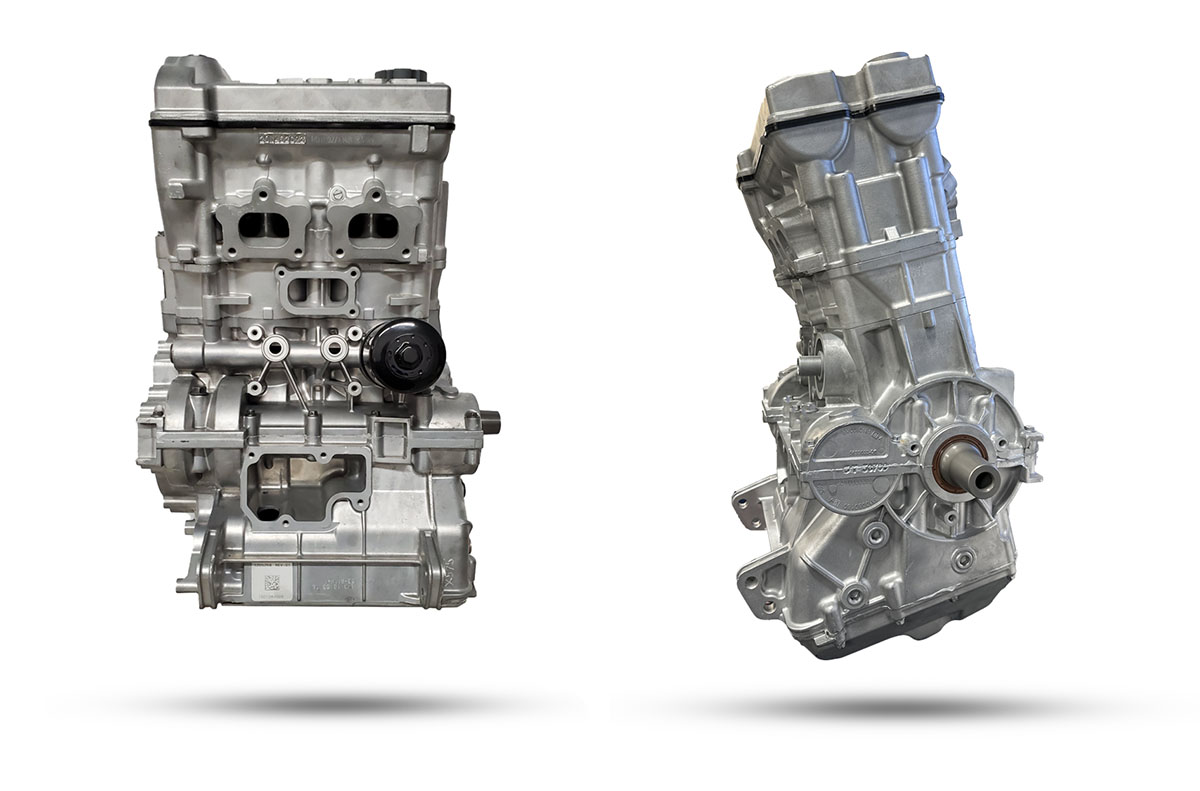Exploring Polaris ProStar Engines
Welcome to our comprehensive guide on Polaris ProStar engines, the powerhouse behind the lineup of Polaris RZR 1000 UTVs. With their exceptional power-to-weight ratios and purpose-built design, ProStar engines are the driving force behind the success of Polaris in the side by side market.
Powering the Polaris RZR 1000
In the past, Polaris relied on partnerships with other manufacturers to supply engines for their ATV’s and UTV’s. However, their remarkable growth over the last decade and a half necessitated a shift towards developing their own engines tailored specifically for their UTV lineup. This led to the birth of ProStar engines, marking a new era of innovation and performance.
From Sportsman to RZR: A Legacy of Excellence
The introduction of ProStar engines began with models like the Sportsman 550 and 850, which showcased the remarkable capabilities of these powerhouses. Soon after, Polaris introduced the 570cc engine, which found its place in the RZR 570. Despite being smaller in displacement than its counterparts, this single-cylinder engine produced comparable peak horsepower, demonstrating the impressive engineering prowess behind ProStar engines.
Building upon their success, Polaris went on to unleash the 875cc engine in the RZR XP 900, followed by the 999cc engine in the RZR XP 1000. Additionally, the release of the single-cylinder 325cc engine in the Sportsman ACE expanded the ProStar lineup, providing a diverse range of options for off-road enthusiasts.
The Key Components to the Polaris RZR 1000 Engine
ProStar engines incorporate a range of advanced features and cutting-edge technology, setting them apart from the competition. Let’s take a closer look at some of the key components that contribute to their unparalleled performance.

Overhead Cams for Optimal Efficiency
The integration of overhead cams allows for precise control over valve timing, resulting in improved combustion efficiency and power delivery. By optimizing the valve operation, ProStar engines achieve exceptional performance across the entire RPM range.
Fuel Injection: Efficiency and Reliability
Equipped with advanced fuel injection systems, ProStar engines ensure efficient and precise fuel delivery, enhancing both performance and fuel economy. This technology enables the engines to adapt to varying conditions, providing optimal power regardless of the terrain or altitude.
Reduced Fuel Consumption: Eco-Friendly Powerhouses
Polaris understands the importance of sustainability and has engineered ProStar engines to minimize fuel consumption without compromising on power. By maximizing combustion efficiency and optimizing fuel delivery, these engines are as eco-friendly as they are potent.
Easy Maintenance, Extended Life Span
ProStar engines are designed with accessibility and ease of maintenance in mind. The layout provides convenient access to critical areas such as oil check and oil filter locations, making routine maintenance a breeze. By ensuring regular upkeep, owners can enhance engine longevity and reliability, ensuring a smooth and trouble-free off-road experience.
Compact Design, Lightweight Advantage
One of the standout features of ProStar engines is their compact design and lightweight construction. This engineering marvel not only enhances vehicle maneuverability but also contributes to improved power-to-weight ratios. The reduced weight of ProStar engines allows for nimble handling without compromising on power, delivering an exhilarating ride.
Customization for Optimal Performance
While ProStar engines may be shared across different product classes, Polaris understands that customization is key to maximizing performance for specific applications. For example, the same ProStar 570 engine can be fine-tuned for peak horsepower when used in a RZR, while in a Ranger, it can be optimized for a flat torque curve and increased low-end power. This level of customization showcases Polaris’ commitment to tailoring its engines to meet the demands of various off-road adventures.
Unmatched Reliability and Future Innovations
ProStar engines have established a reputation for their exceptional reliability when properly maintained. As Polaris continues to invest in research and development, we anticipate the release of additional ProStar engines that will power an entirely new generation of ORV vehicles. The future looks bright for those seeking unparalleled performance and durability.
In conclusion, Polaris ProStar engines have redefined the standards of off-road power and performance. With their advanced technology, optimized design, and impressive power characteristics, these engines continue to push the boundaries of what is possible in the world of ORV vehicles. Whether you’re tackling rugged trails, exploring vast terrains, or seeking thrilling adventures, ProStar engines are the driving force that will propel you to new heights.
How Long Do UTVs Last: A Comprehensive Guide for 2023
Welcome to our comprehensive guide on the lifespan of UTVs, also known as Side by Sides. If you’re considering purchasing a UTV or already own one, you may be wondering how long these vehicles typically last and what factors can influence their durability and longevity. In this guide, we will provide you with valuable insights into UTV lifespan, maintenance practices, and various factors that can impact the lifespan of your UTV. By following these guidelines, you can ensure that your UTV remains in optimal condition and operates smoothly for many years to come.
Understanding UTV Engine Lifespan
UTVs have gained immense popularity due to their versatility and capability in various off-road activities. As with any vehicle, the lifespan of a UTV depends on several factors, including maintenance, usage, terrain, and environmental conditions. On average, a well-maintained UTV can last between 7,000 and 8,000 hours of use or approximately 10 to 15 years. However, heavier usage and harsh terrain can accelerate wear-and-tear on critical components such as the engine and suspension system.
Factors That Determine Vehicle Lifespan
1. Maintenance
Regular maintenance is crucial for ensuring the longevity of your UTV. By following a proper maintenance schedule, including regular oil changes, tire rotations, brake inspections, and other necessary procedures, you can extend the lifespan of your UTV and prevent potential issues.

2. Frequency of Use
The more frequently a UTV is used, the greater the wear and tear it experiences. UTVs used more often may have a shorter lifespan compared to those used less frequently. However, proper maintenance and care can mitigate the effects of heavy usage.
3. Terrain
The type of terrain on which a UTV is driven can significantly impact its lifespan. Rough and challenging terrains, such as rocky or mountainous areas, can cause increased stress on the vehicle’s components, leading to faster wear and tear. It is important to consider the type of terrain you will be driving on and adjust your maintenance routine accordingly.
4. Weight Capacity
Overloading a UTV beyond its recommended weight capacity can strain the engine and suspension system, resulting in a shorter lifespan. It is essential to adhere to the manufacturer’s guidelines regarding weight limits and avoid excessive loading.
5. Weather Exposure
Exposure to extreme temperatures, moisture, and sunlight can cause damage to a UTV’s components over time. Proper storage and protection from these elements can help extend the lifespan of your UTV.
6. Driving Style
Aggressive driving habits, such as high-speed turns or sudden stops, can stress a UTV’s components and shorten its lifespan. It is important to drive responsibly and avoid unnecessary strain on the vehicle.
7. Quality of Parts
UTVs with higher-quality parts generally have a longer lifespan compared to those with lower-quality components. Investing in a UTV with reliable and durable parts can significantly contribute to its longevity.
8. Age
Like any vehicle, UTVs experience wear and tear as they age. As the UTV gets older, its components may require more frequent maintenance and replacement to ensure optimal performance and longevity.
9. Storage Conditions
Storing a UTV in a damp or humid environment can accelerate rust and other forms of corrosion, which can shorten its lifespan. It is recommended to store your UTV in a dry and well-ventilated area to minimize the risk of damage.
10. Manufacturer Design and Construction
The design and construction quality of a UTV, including the materials used, can impact its lifespan. UTVs from reputable manufacturers that prioritize durability and longevity are likely to have a longer lifespan.
By considering and addressing these factors, you can take necessary measures to ensure your UTV’s longevity, improve productivity, reduce downtime, and increase cost-effectiveness.
Make your Polaris RZR Last
The longevity of a UTV plays a crucial role in several aspects, including safety, productivity, cost-effectiveness, and environmental impact.
1. Safety
A UTV with a longer lifespan is less likely to experience breakdowns or malfunctions during use, reducing the risk of accidents and injuries to the operator and passengers.
2. Productivity
UTVs that last longer require fewer repairs and maintenance, resulting in less downtime and higher efficiency. This directly translates into increased productivity for individuals and businesses relying on these vehicles for their operations.
3. Cost-effectiveness
UTVs with shorter lifespans often require more frequent repairs and replacements, increasing the overall cost of ownership. On the other hand, UTVs with longer lifespans provide a better return on investment, as they require less frequent maintenance and replacement parts.
4. Environmental Impact
UTVs with shorter lifespans generate more waste, as they require more frequent replacements and repairs. This contributes to landfill waste and environmental pollution. By investing in UTVs with longer lifespans, you can minimize the environmental impact associated with these vehicles.
In conclusion, UTV longevity is crucial for ensuring safety, improving productivity, reducing costs, and minimizing environmental impact. By understanding the factors that can impact UTV lifespan and following proper maintenance practices, you can maximize the lifespan of your UTV and enjoy its benefits for many years.
Definition of UTV Life Expectancy
The exact definition of UTV lifespan may vary, but it generally refers to the length of time a UTV can function optimally and safely without needing significant repairs or replacements. UTV longevity is evident in the vehicle’s performance, durability, and efficiency over time. Factors such as usage intensity, environmental conditions, maintenance practices, and overall construction quality can affect the lifespan of a UTV.
Technological advancements have also played a role in improving UTV longevity. The incorporation of durable materials and better engine designs has resulted in reduced wear and tear and enhanced fuel economy. To evaluate UTV longevity accurately, it is essential to consider multiple aspects of their design and operation while adhering to manufacturer recommendations for maintenance schedules and practices.
Ultimately, investing in a reliable UTV with a long lifespan enhances productivity while providing value for money. By practicing regular maintenance, proper storage and transportation, safe and responsible usage, and considering upgrades or modifications, you can contribute to the longevity of your UTV.
Shop Standards for UTV Lifespan
There is no specific industry standard for the average lifespan of a UTV, as it can vary significantly depending on factors mentioned earlier. However, manufacturers generally provide warranty periods ranging from one to three years for their UTVs, depending on the brand and model.
It is important to note that the lifespan of a UTV can be influenced by factors such as the quality of parts used, frequency and intensity of use, and environmental conditions. Regular maintenance and adherence to manufacturer guidelines can significantly extend the lifespan of a UTV.
In conclusion, while there is no specific industry standard for UTV lifespan, following proper maintenance practices, safe usage, and storage guidelines can help maximize the longevity of your UTV, making it a more productive and cost-effective investment.

Owner’s Experiences of Polaris RZR 1000 Lifespan
The owner’s experiences and actions with their UTV can significantly impact its lifespan. By prioritizing maintenance, safe driving habits, suitable storage, and regular cleaning, owners can extend the lifespan of their UTVs.
1. Maintenance
Regular maintenance and inspect are essential for the longevity of a UTV. Neglecting routine maintenance can lead to breakdowns, decreased performance, and a shortened lifespan. Consistent maintenance practices such as engine oil changes, air filter replacements, and tire rotations can keep the UTV in good condition and prolong its lifespan.
2. Driving Habits
How a machine is driven can affect its longevity. Reckless driving or pushing the motor beyond its limits can cause significant damage to the UTV’s internal parts, suspension, and brakes, leading to a shortened lifespan. Practicing safe driving habits and following the manufacturer’s recommendations on operating the UTV can help prolong its lifespan.
3. Storage
Proper storage of a UTV is crucial for its longevity. Owners who store their UTVs in a sheltered, temperature-controlled area can protect the vehicle from the elements and prevent rust and corrosion.
4. Modifications
Modifying a UTV with aftermarket parts, especially engine components can significantly impact its lifespan. Installing low-quality parts or making modifications that exceed the manufacturer’s recommendations can cause severe damage to the UTV’s internal parts, suspension, and brakes, leading to a shortened lifespan. Only make modifications compatible with the UTV and follow the manufacturer’s guidelines to prevent damage.
5. Cleaning
Regular cleaning is an essential aspect of maintenance. Dirt and debris can accumulate on the UTV’s exterior and internal components, causing damage and shortening the vehicle’s lifespan. Regular cleaning with soap and water can help prevent damage.
In conclusion, the owner’s experiences with the UTV can significantly impact its longevity. Be sure to properly maintain your vehicle, exercise safe driving habits, and have proper storage, following the manufacturer’s recommendations, and regular cleaning can help prolong the vehicle’s lifespan.
Conclusion
In conclusion, understanding the lifespan of a UTV and taking appropriate measures to extend its longevity are essential for UTV owners. By considering factors such as maintenance, usage, terrain, and storage conditions, owners can ensure that their UTVs remain in optimal condition and operate efficiently for many years.
Regular maintenance, adherence to recommended maintenance schedules, safe driving practices, proper storage, and regular cleaning are key to maximizing the lifespan of your UTV. By following these guidelines, you can enjoy the benefits of your UTV while minimizing costs and environmental impact.
Remember, investing in a reliable and durable UTV from reputable manufacturers is a wise choice to ensure longevity and value for your money. Enjoy your off-roading adventures with confidence, knowing that your UTV is well-maintained and built to withstand the rigors of the terrain.
Recent Posts
How to Clean Your UTV Windshield Properly Without Scratching It
How to Clean Your UTV Windshield Properly Without Scratching It Owning a UTV means spending plenty of time kicking up dust, mud, and bugs—and all of that ends up on your windshield. The wrong...
How Long Can I Drive My UTV on Unbalanced Tires? Driving on unbalanced tires can be dangerous and should be avoided whenever possible. UTVs are no exception and require special consideration when it...

